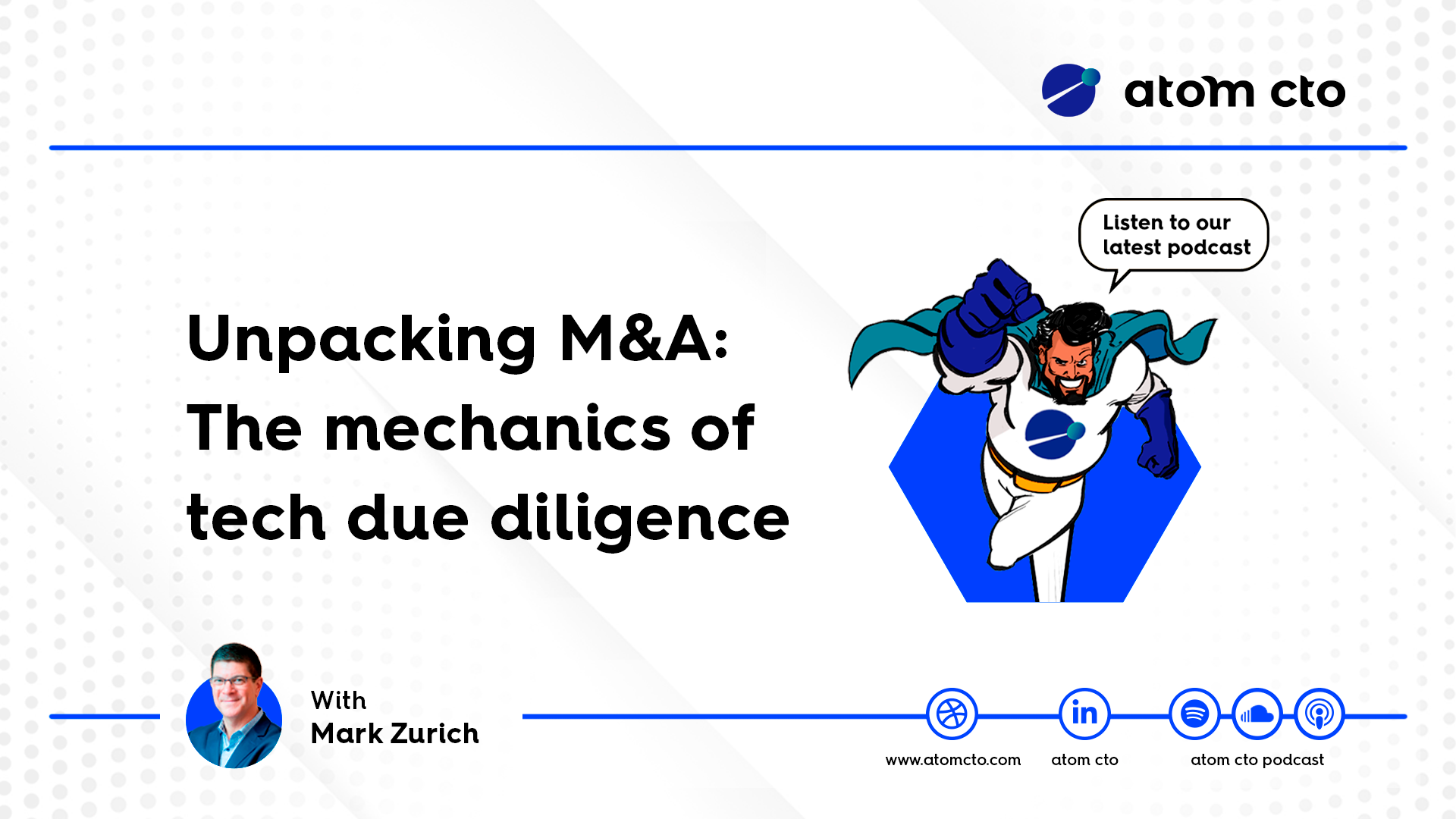In a revealing conversation on the Atom CTO podcast, technology veteran Mark Zurich shares his extensive experience navigating the intricate landscape of mergers and acquisitions (M&A) and tech due diligence from both the buyer and seller perspectives. With 35 years in the tech industry, including roles at industry giants like General Electric, Nokia, and Meta, Mark offers invaluable insights into the critical yet often overlooked aspects of technical due diligence.
The Seller’s Imperative: Know Thyself
One of the most crucial insights for companies considering a sale is the importance of self-awareness. “If you’ve got 6-12 months before going to market, conduct your own due diligence,” Mark advises. This proactive approach can be compared to having a home inspection before listing your house – it’s better to discover and address issues before potential buyers find them.
Companies should thoroughly examine their technical landscape, from code quality to architectural decisions. This includes reviewing licensing and compliance, assessing security vulnerabilities, and evaluating team structure. While some sellers might be tempted to gloss over problems, Mark warns that attempting to “put lipstick on a pig” typically backfires during buyer due diligence, potentially damaging credibility and reducing valuation.
The Buyer’s Strategy: Beyond Surface-Level Assessment
For buyers, the due diligence process requires a comprehensive evaluation of three fundamental areas of alignment. First, technical alignment involves assessing not just the current technology stack, but its scalability, security posture, and accumulated technical debt. This assessment needs to go beyond superficial compatibility checks to understand the true state of the technology.
Operational synergies form the second pillar of evaluation. Mark emphasizes the importance of examining development methodologies, DevOps practices, and deployment processes. He shares an illuminating example where misalignment between companies’ deployment practices – one using strict change advisory boards versus another allowing direct production deployments – revealed deeper cultural incompatibilities.
The third and equally crucial element is cultural fit. This goes beyond typical corporate culture assessments to examine how teams approach development, maintain quality standards, and drive innovation. Mark notes that cultural misalignment often becomes apparent during technical discussions between respective team leaders.
Risk Assessment: A Four-Dimensional View
A thorough due diligence process must evaluate risks across multiple dimensions. Cyber risks and past data breaches need careful examination, particularly because smaller companies might have unaddressed vulnerabilities that become significant liabilities post-acquisition. Mark shares a cautionary tale from his experience where undisclosed security incidents surfaced only after an acquisition was completed.
Operational risks, including system dependencies and vendor relationships, require equal attention. Mark emphasizes the importance of understanding reputational risks, noting that past incidents and customer sentiment can significantly impact post-acquisition success.
Post-Acquisition Integration: The Critical Phase
The most overlooked aspect of M&A is what happens after the deal closes. “Everyone focuses on the deal, but few think about what happens next,” Mark observes. This oversight can lead to significant problems, especially when integration responsibilities fall to teams already managing full workloads.
Successful integration requires clear ownership and accountability, with defined timelines and metrics for success. Mark strongly advocates for retaining key leadership from acquired companies for at least 90 days to six months, ensuring smooth knowledge transfer and maintaining team stability. He explains that while some acquiring companies have a policy of immediately replacing leadership, this approach often destroys value by disrupting team dynamics and losing crucial institutional knowledge.
The key to successful integration lies in quickly returning to normal operations. This means minimizing disruption to daily work while managing necessary changes in processes, tools, and reporting structures. As Mark puts it, “The objective is to get the seller’s company back focused on work and not on the acquisition.”
Looking Ahead
Technical due diligence in M&A isn’t just about checking boxes – it’s about ensuring long-term success for both parties. By taking a comprehensive approach that considers technical, operational, and human factors, companies can significantly improve their chances of successful M&A outcomes. Whether you’re considering selling your company or looking to acquire, understanding these complexities can make the difference between a successful integration and a costly mistake.
Listen to the full podcast episode for more detailed insights and practical examples from Mark’s extensive M&A experience.
